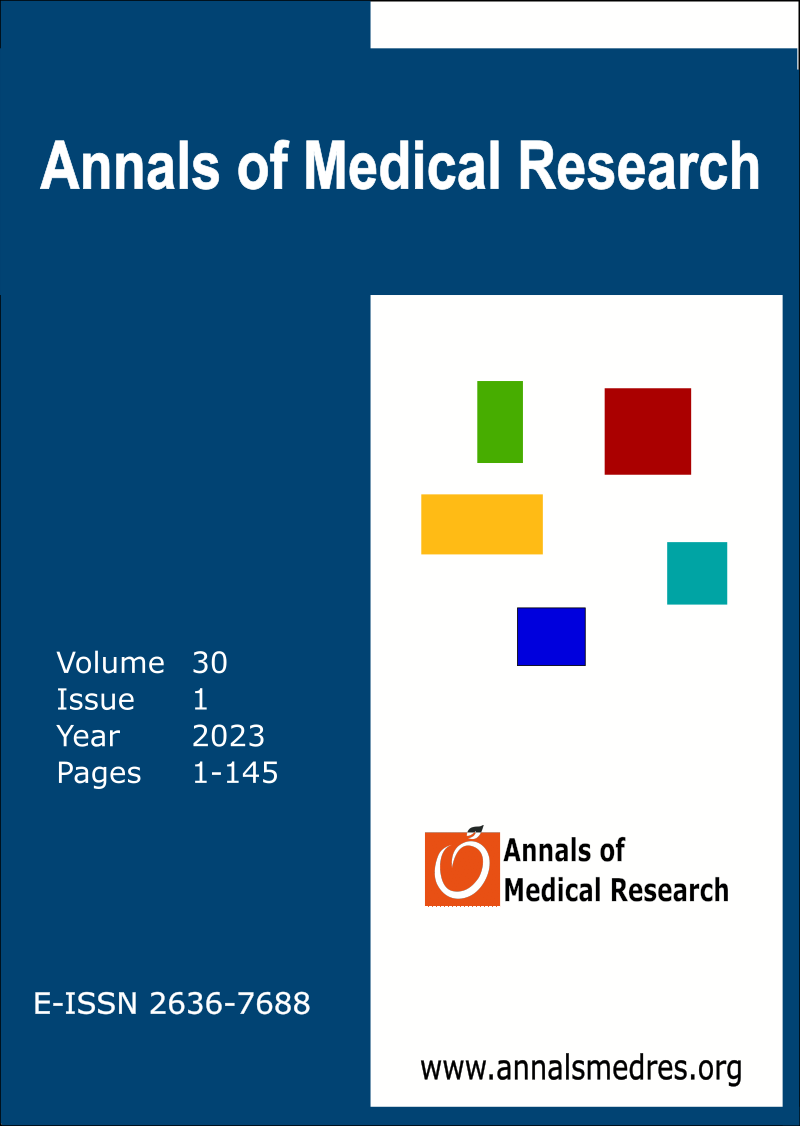The relationship between osteochondral lesion of the talus and the foot arch angles in adults: A retrospective study
Keywords:
Osteochondritis dissecans, Calcaneal spur, Tendinopathy, Talocalcaneal joint, Cavus foot, Flat footAbstract
Aim: The current study aimed to compare the arch angles of the foot, Achilles tendinopathy, subcutaneous fat tissue thickness of the heel, and epin calcanei (EC) in patients with osteochondral lesion of the talus (OLT).
Materials and Methods: The magnetic resonance images (MRI) of the ankle performed by the radiology clinic between March 2020 and October 2021 were examined. Based on the MRI findings, the patients diagnosed with OLT were included in the study group (n = 55) and those not diagnosed with OLT formed the control group (n = 118). All the patients included in the study were investigated for their demographic characteristics and presence of EC. Weight-bearing lateral X-ray images were used to measure the lateral talus-first metatarsal angle (Meary’s angle), lateral talocalcaneal angle (LTCA), and calcaneal inclination angle (also known as the calcaneal pitch).
Results: The study and control groups had no significant difference in terms of gender distribution (P = 0.575). The patients in the study group had a significantly higher mean age than the control group (P < 0.001). Evaluation of the arch angles of the foot showed the patients with OLT to have higher LTCA and calcaneal pitch angles and greater subcutaneous fat thicknesses (p < 0.001, p < 0.001, and p = 0.004, respectively). In addition, the study group showed higher rates of patients with EC and Achilles tendinopathy (p = 0.076 and p = 0.019, respectively). According to the binary logistic regression analysis model, each unit of increase in the patients’ age increases the presence of osteochondritis dissecans (OCD) of the talus by 1.063 times (95% confidence interval (CI): 1.012-1.116; P = 0.015). Each unit of increase in LTCA increases the presence of OCD of the talus by 1.360 times (95% CI: 1.219-1.516; P < 0.001).
Conclusion: Our study demonstrated that sex had no effect on OLT incidence, whereas changes in the LTCA and pitch angles elevated the risk of OLT. Furthermore, increased age was found to be associated with a higher risk of OLT formation. We also showed that Achilles tendinopathy and EC were significantly higher in patients with OLT. A considerable number of future studies are needed to establish whether this significant relationship is causal.
Downloads
Published
Issue
Section
License
Copyright (c) 2023 The author(s)

This work is licensed under a Creative Commons Attribution-NonCommercial-NoDerivatives 4.0 International License.
CC Attribution-NonCommercial-NoDerivatives 4.0






